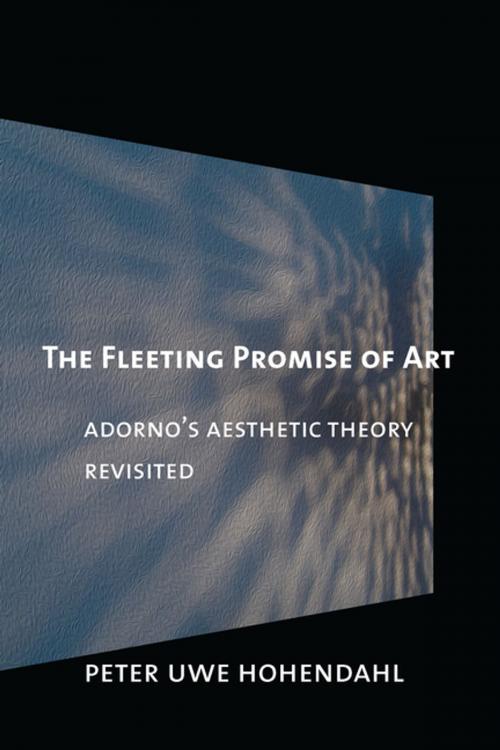The Fleeting Promise of Art
Adorno's Aesthetic Theory Revisited
Fiction & Literature, Literary Theory & Criticism, European, German| Author: | Peter Uwe Hohendahl | ISBN: | 9780801469275 |
| Publisher: | Cornell University Press | Publication: | November 15, 2013 |
| Imprint: | Cornell University Press | Language: | English |
| Author: | Peter Uwe Hohendahl |
| ISBN: | 9780801469275 |
| Publisher: | Cornell University Press |
| Publication: | November 15, 2013 |
| Imprint: | Cornell University Press |
| Language: | English |
A discussion of Theodor Adorno’s Aesthetic Theory is bound to look significantly different today than it would have looked when the book was first published in 1970, or when it first appeared in English translation in the 1980s. In The Fleeting Promise of Art, Peter Uwe Hohendahl reexamines Aesthetic Theory along with Adorno’s other writings on aesthetics in light of the unexpected return of the aesthetic to today’s cultural debates.
Is Adorno’s aesthetic theory still relevant today? Hohendahl answers this question with an emphatic yes. As he shows, a careful reading of the work exposes different questions and arguments today than it did in the past. Over the years Adorno’s concern over the fate of art in a late capitalist society has met with everything from suspicion to indifference. In part this could be explained by relative unfamiliarity with the German dialectical tradition in North America. Today’s debate is better informed, more multifaceted, and further removed from the immediate aftermath of the Cold War and of the shadow of postmodernism. Adorno’s insistence on the radical autonomy of the artwork has much to offer contemporary discussions of art and the aesthetic in search of new responses to the pervasive effects of a neoliberal art market and culture industry. Focusing specifically on Adorno’s engagement with literary works, Hohendahl shows how radically transformative Adorno’s ideas have been and how thoroughly they have shaped current discussions in aesthetics. Among the topics he considers are the role of art in modernism and postmodernism, the truth claims of artworks, the function of the ugly in modern artworks, the precarious value of the literary tradition, and the surprising significance of realism for Adorno.
A discussion of Theodor Adorno’s Aesthetic Theory is bound to look significantly different today than it would have looked when the book was first published in 1970, or when it first appeared in English translation in the 1980s. In The Fleeting Promise of Art, Peter Uwe Hohendahl reexamines Aesthetic Theory along with Adorno’s other writings on aesthetics in light of the unexpected return of the aesthetic to today’s cultural debates.
Is Adorno’s aesthetic theory still relevant today? Hohendahl answers this question with an emphatic yes. As he shows, a careful reading of the work exposes different questions and arguments today than it did in the past. Over the years Adorno’s concern over the fate of art in a late capitalist society has met with everything from suspicion to indifference. In part this could be explained by relative unfamiliarity with the German dialectical tradition in North America. Today’s debate is better informed, more multifaceted, and further removed from the immediate aftermath of the Cold War and of the shadow of postmodernism. Adorno’s insistence on the radical autonomy of the artwork has much to offer contemporary discussions of art and the aesthetic in search of new responses to the pervasive effects of a neoliberal art market and culture industry. Focusing specifically on Adorno’s engagement with literary works, Hohendahl shows how radically transformative Adorno’s ideas have been and how thoroughly they have shaped current discussions in aesthetics. Among the topics he considers are the role of art in modernism and postmodernism, the truth claims of artworks, the function of the ugly in modern artworks, the precarious value of the literary tradition, and the surprising significance of realism for Adorno.















